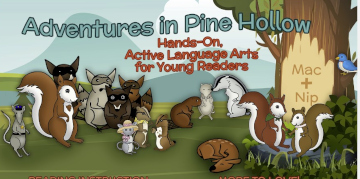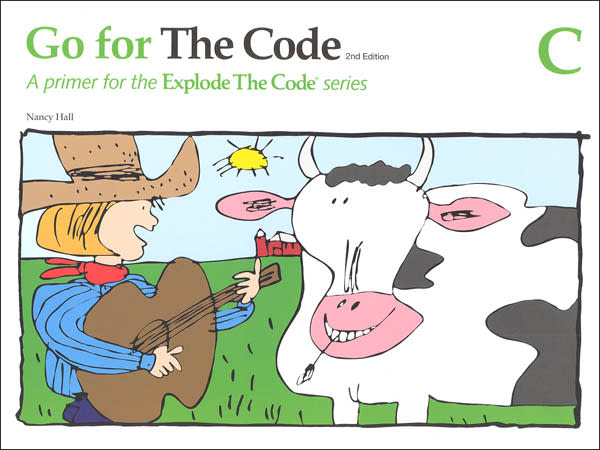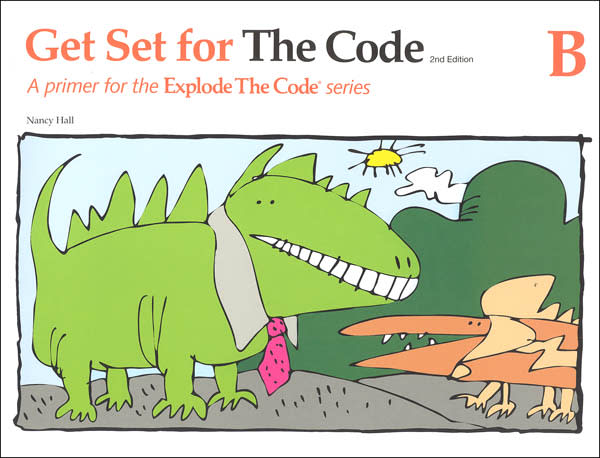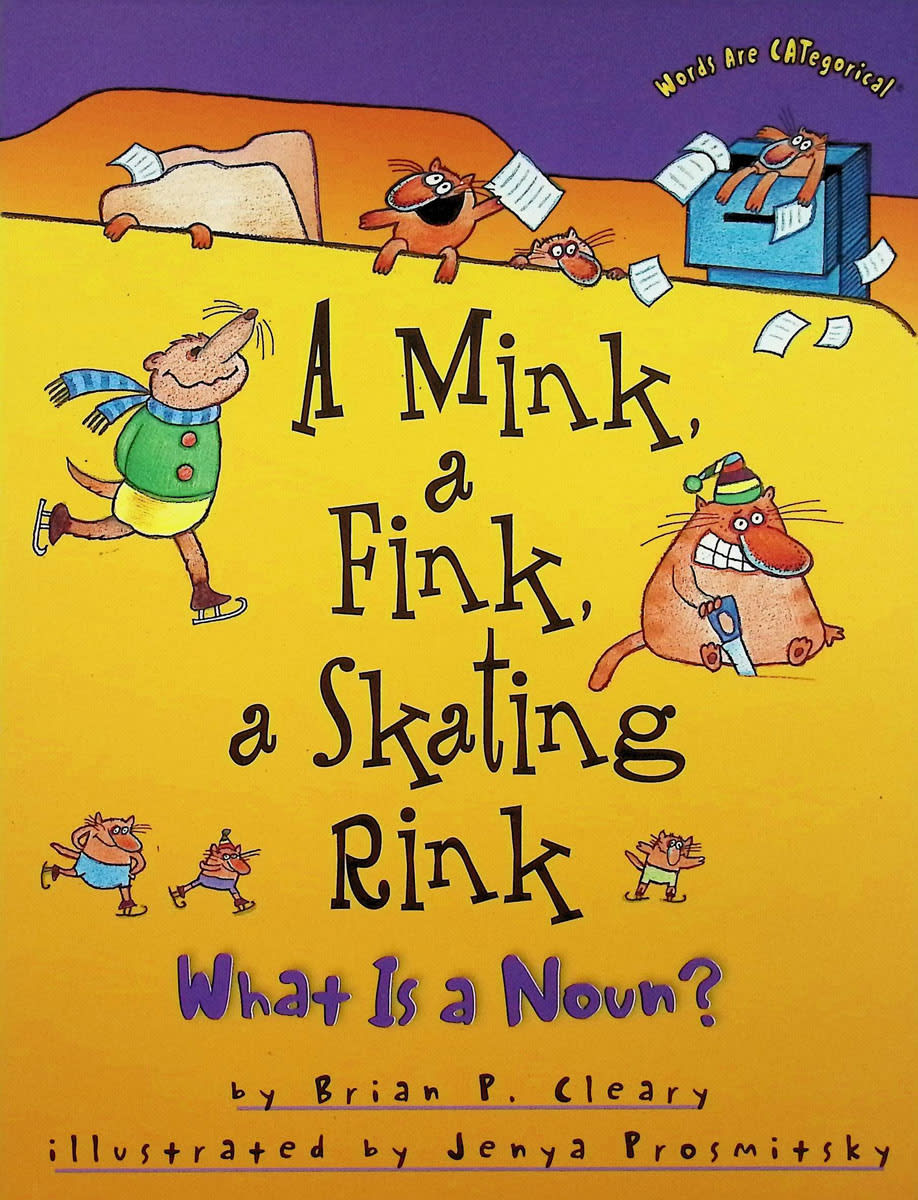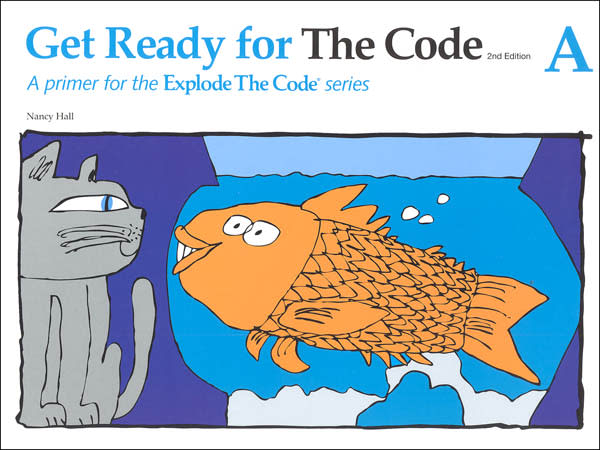WinterPromise has created Adventures in Pine Hollow, a four- to five-year, phonics-based reading and language-arts program. It can be used with their complete curriculum or on its own. Adventures in Pine Hollow takes children from the recognition of sounds and letters through reading chapter books. Students will also learn handwriting, spelling, and vocabulary along with grammar and composition skills.
Pine Hollow is a forest inhabited by squirrels, chipmunks, mice, badgers, and other critters who are prominently featured throughout the program. Attractive artwork reflects the forest theme.
Overview
There are five courses within the program, and they cover language arts for kindergarten through either third or fourth grade. Three of the courses should each take a full year to complete, and two of them might be completed in less time (as little as one semester), especially with children able to move at a faster pace. The five courses are ungraded, allowing you to teach each level when children are ready.
Each course has a number of components. Most of them are proprietary WinterPromise resources that are available in either print or PDF format. However, some WinterPromise resources, such as the sets of cards and the activity kit, are available only as physical products. Some of the courses also use books from other publishers that you will have to borrow or purchase.
Each course has its own guide that explains how the courses work and provides additional activities and games that are not in the other resource books for that course. It’s important to use these activities and games, especially the lengthy list of spelling activities near the beginning of each guide. These spelling activities offer suggestions for children with different learning styles, including games, whole-body movement, hands-on activities, drawing activities, auditory games, and much more. Many of the guides also include answer keys and formatted handwriting-practice pages.
The reading lessons use a phonetic approach called vertical phonics. Vertical phonics teaches all of the sounds of a letter or phonogram (such as ough in tough, dough, and thought) at the same time rather than beginning with only the short-vowel sounds then gradually adding other sounds.
Letters to Little Words
Letters to Little Words is a year-long kindergarten course although it might be used earlier or later than kindergarten. Children should have some familiarity with the letters of the alphabet before beginning this course. It teaches the sounds of the individual letters and letter formation as well as 26 additional phonograms such as sh, oa, and tch.
Children learn both uppercase and lowercase forms along with all of the sounds of a letter. For example, in the second week, children learn the letter a. A character card helps them remember three sounds for the letter with the illustration on the card and a sentence that describes the illustration: “Mac won an Acorn Award.”
The course uses worksheets, phonics flashcards, physical activities (e.g., hide and seek games related to phonograms), oral practice, pre-writing and handwriting practice, drawing activities, and activities in workbooks (circling, matching, writing letters, etc.). Children start to write complete sentences in week 11 if they are able, and spelling is formally introduced in week 28.
Children learn to write on smaller lines than are used in most other programs. The idea is that this is more helpful in developing the fine motor skills they will use for handwriting in the future.
The lesson plans include “Activities and Lifeskills,” such as learning emergency phone numbers, how to answer the phone, how to measure liquids, how to read a calendar, table manners, how to tie shoelaces, and much more. The guide for this course has instructions and lesson plans. The other WinterPromise resources for the course are:
- Pine Nut City Phonics Pages – teaches how to print individual letters
- Pine Nut City Handwriting Set – for practice writing letters, phonograms, and words
- Mac’s Make-Your-Own Phonics Pages – children add their own drawings to pre-formatted pages, creating their own phonics book
- Phonics Cards & Character Cards - the set of phonics cards and character cards is only available as a physical product.
Four consumable workbooks from other publishers are also used—Jump Right into Reading by Jane Ervin and the three early-learning books in the Explode the Code® series: Get Ready for the Code, Get Set for the Code, and Go for the Code.
Syllables to Sentences
Syllables to Sentences might be completed in as little as one semester, although it can be spread out over a full year if need be. It begins by helping children read three-letter words that have short vowels. It continues through having children read and write short sentences that have easy words.
Students review the Phonics Cards & Character Cards used in the first course, and during the first week, they start reading from the set of 18 booklets that serve as readers. They are given a list of vocabulary words each week—words that are used in the readers. Children also are given a list of spelling words beginning with the third week. They will create their own picture dictionary from pre-formatted pages found in an appendix of the guide, then they will add both their spelling and vocabulary words to the dictionary.
In addition to the guide, this course includes:
- Play on Pine Nut Park Handwriting Set – Children copy sentences, write their own sentences using the words provided, copy sentences but substitute with a word from a word bank, write their spelling words, write their own name, draw illustrations for words and sentences, group words into word families, and write their own original sentences.
- Pine Nut Park Workbooks A & B – Both of these workbooks have activities such as copying words, alphabetizing, unscrambling letters, drawing pictures of words, circling the correct answer, filling in a missing letter, and identifying words in word search puzzles.
- The Hands-on Phonics Activity Pack will be used with this course as well as the next three courses. It provides resources for the games and activities described in the guides.
Paragraphs to Pages
As the title states, children begin this one-semester course with the ability to read short paragraphs and will be reading pages by the end. The course can be completed in as little as one semester, but if a student needs longer, the course can be spread out over a year. You will need the set of Phonics Cards & Character Cards used in the previous two courses, plus the Hands-on Phonics Activity Pack from the previous course.
In addition to the guide, two other WinterPromise books are essential for this course. Play on Pine Nut Street with Mac & Nip and Tricks in the Thicket with Mac, Nip, & Acorn are what WinterPromise calls Write-In Readers. The Write-In Readers are the mainstay of the course, providing reading material and worksheet activities together rather than in separate books. For instance, the first lesson begins with two pages of a story followed by four activity pages that address phonics, reading comprehension, spelling, and vocabulary. These books have more than 200 pages each!
A parent needs to work closely with the child, following the brief instructions on each page of the Write-In Readers. The guide has you work through the course in order, and it also reminds you to use the fun reinforcement activities from the games section in the appendices. A third resource for Paragraphs to Pages, titled Pine Nut Park Handwriting Set, is an optional book for children to learn letter formation.
Stories to Short Chapters
Stories to Short Chapter is a year-long course that helps children develop fluency while adding to their vocabulary and other language arts skills. It also introduces basic writing mechanics, such as capitalization and punctuation.
In addition to the guide, there are four Write-In Readers and the Pine Hollow Handwriting Set. Two other required items are only available as physical products; Acorn’s Game Set was created by WinterPromise and Words I Use When I Write by Alana Trisler is a consumable dictionary and spelling book from another publisher. You will need to prepare the games in advance, doing things such as mounting games onto posterboard and maybe laminating them.
The Write-In Readers are the mainstays of the course as they are for Paragraphs to Pages. They provide both reading material and activity pages arranged in the order you will use them. They include activities for reading comprehension, phonics, spelling, and vocabulary. They also teach skills such as using a dictionary, determining the difference between fact and fiction, writing complete sentences, identifying the main idea, and identifying nouns and verbs.
Creative Narration is an important part of the lessons this year. These oral narrations—where children tell about something or create their own story—help to prepare children for written narrations in the future.
The Pine Hollow Handwriting Set used with this course has lined pages that have storystarters, copywork, letter-writing assignments, and many other types of writing prompts and assignments.
The Sneaky, Snacky, Squirrel Game (available from Amazon and other resellers) is optional, but it is scheduled in this course as well as in the next course. There is already quite a bit of game-type activity in the course, so this truly is optional.
Readers to Real Books
Readers to Real Books is a year-long course that helps students increase their comprehension and reading speed while covering phonics, handwriting, spelling, vocabulary, and other language-arts skills.
The course consists of the guide, four Write-In Readers, the Silver Lake Handwriting Set, and three print books from the Words are Categorical series by Brian P. Cleary. All except Cleary’s books are WinterPromise books. Cleary’s books are colorful, silly storybooks that teach about categories of words (e.g., nouns or adverbs) one at a time.
The appendices in the guide include handwriting pages and games. The same Hands-On Phonics Activity Pack used with other levels is required for the games. (You will need to prepare the games in advance, mounting game boards on poster board, copying game cards onto cardstock, and cutting cards apart.)
The Write-In Readers contain most of the lesson material with more than 200 pages per book. In this course, the stories are longer, the spelling and vocabulary words are more challenging, and more attention is given to grammar. Students will write a paragraph of three to six sentences almost every week.
Instructions in the guide explain how to correlate writing assignments with WinterPromise's themed packages if you are using them. For example, if you are using the American Story 1 themed package, your child will read the book If You Lived with the Hopi Indians and write a description of the Hopi Indians for the writing assignment. Other options are suggested for other themed packages, but most writing assignments are for Hideaways in History, American Story 1, and American Story 2. (See my review of WinterPromise for more details regarding the themed packages.)
Summary
Adventures in Pine Hollow’s integrated approach for teaching language arts—sometimes making connections to other subject areas—makes learning more interesting for children. And the multisensory methods address different learning styles. The result is a well-developed, comprehensive program that should be very effective.




